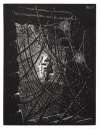Maurice
de Vlaminck
Maurice de Vlaminck's vibrant brushstrokes and bold use of colour marked a revolutionary departure in early 20th-century art, establishing him as a key figure in the Fauvist movement. If you’re looking for original Maurice de Vlaminck prints and editions for sale or would like to sell, request a complimentary valuation and explore our network’s most in-demand works.
Maurice de Vlaminck art for sale
Discover Maurice de Vlaminck prints for sale, exclusively available through our private network of collectors. Explore signed and unsigned screenprints, lithographs, digital prints, and rare editioned proof prints by era-defining blue chip artists.
Sell Your Art
with Us
with Us
Join Our Network of Collectors. Buy, Sell and Track Demand
Biography
Born in 1876 in Paris, Maurice de Vlaminck was the son of a musician and an aspiring artist. His early life in the Parisian suburbs would later be featured in his artworks. Initially aspiring to be a professional cyclist, Vlaminck’s career took a decisive turn, leading him to pursue art full-time. He was largely self-taught, drawing inspiration from the likes of Van Gogh and the Impressionists.
The turning point for Vlaminck came in 1905, when he exhibited at the Salon d'Automne alongside Matisse, Derain, and other contemporaries, in what would famously be dubbed as the "Cage aux Fauves" (Cage of Wild Beasts) for their wild, expressive use of colour. This exhibition not only solidified his reputation as a leading Fauvist but also marked the beginning of his most prolific period, during which he created some of his most famous works.
After World War I, Vlaminck shifted towards a more subdued palette and structured landscapes, reflecting a maturation of his style. His travels across France provided new scenery and subjects, from the bustling streets of Paris to the riversides of Chatou, enriching his oeuvre with diversity.
Significant collaborations with contemporary giants like Picasso helped refine his approach to space and composition. His later works, which included a series of black-and-white lithographs, showcased his versatility and depth.
As his career progressed, Vlaminck began to explore beyond the Fauvist style, incorporating elements of Cubism and later adopting a more subdued approach that showed a significant influence from the French classical tradition. This phase of his work was marked by a deeper exploration of structure and form, though he never completely abandoned his passion for intense, vibrant colours. His travels across France, particularly through rural areas, deeply influenced his later landscapes, imbuing them with a robust, pastoral charm that contrasted with his earlier, more tumultuous compositions.





















